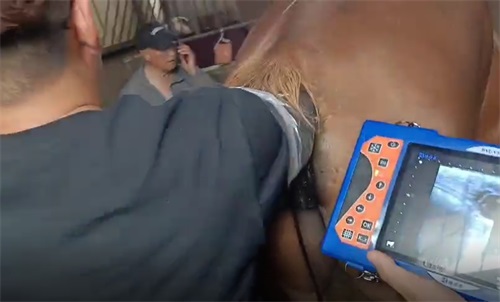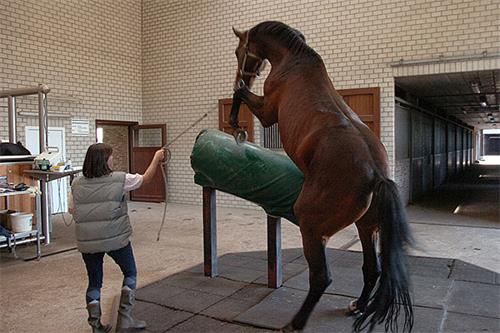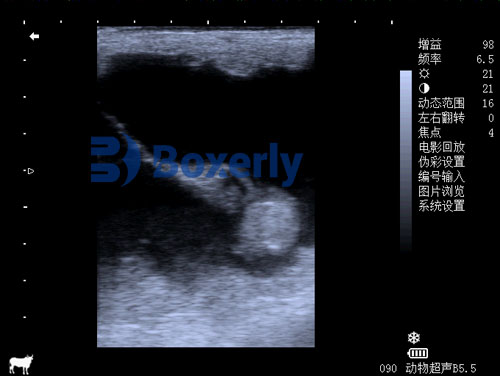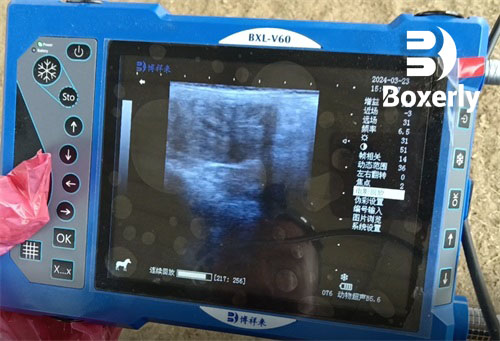Successfully inseminating a mare depends largely on one key factor: timing. As a livestock farm operator, I’ve learned through hands-on experience that even the best semen quality or veterinary support won't guarantee conception if ovulation isn't accurately predicted and synchronized with insemination. In this article, I want to share practical knowledge on how to time ovulation in mares, focusing on ultrasonographic techniques, hormonal control, and best practices in the field.

Understanding Mare Ovulation Cycles
Mares are seasonally polyestrous animals, meaning they naturally cycle during the spring and summer months. Each estrous cycle lasts about 21 days, with estrus (the period of sexual receptivity) typically lasting 5–7 days. Ovulation usually occurs in the final 24–48 hours of estrus.
For a successful pregnancy, insemination must occur no more than 12 hours before or 6 hours after ovulation. This tight window means accurate ovulation prediction is not just helpful—it’s essential.
The Role of Ultrasonography in Predicting Ovulation
Transrectal ultrasonography is the most reliable method for tracking ovarian changes in real time. It allows us to:
Monitor follicle growth
Mature follicles are usually 35–45 mm in diameter before ovulation. Daily scanning during estrus helps us observe the dominant follicle’s size and shape, which typically becomes softer and more irregular right before ovulation.Evaluate uterine edema
Under the influence of estrogen, the uterus displays a distinctive “wagon wheel” pattern of edema on ultrasound. As ovulation nears, this edema decreases, giving a strong visual cue of hormonal shifts.Detect the corpus luteum
After ovulation, the collapsed follicle turns into a corpus luteum (CL), which can be confirmed via ultrasound as a solid, echogenic structure. This helps verify ovulation has occurred if scanning was missed during the critical window.
As someone managing a farm, having access to portable Veterinary ultrasound systems and knowing how to interpret these key changes has saved us time, resources, and stress.
Hormonal Tools for Inducing and Synchronizing Ovulation
To gain control over timing, veterinarians often use ovulation-inducing agents when the mare has a pre-ovulatory follicle. Two commonly used hormones are:
Human Chorionic Gonadotropin (hCG):
Administered when a dominant follicle ≥35 mm is present, hCG usually induces ovulation within 36–48 hours.Deslorelin (GnRH analogue):
Similar to hCG in function, deslorelin also promotes timely ovulation, usually within 36–42 hours. It’s often used in mares that are resistant to hCG or require tighter control.
These hormones are most effective when paired with daily ultrasonographic monitoring to ensure the follicle is at the correct stage of maturity.

Timing Insemination: Fresh, Chilled, or Frozen Semen
The insemination schedule depends on the type of semen used:
Fresh Semen:
Ideally, inseminate within 12 hours before ovulation. Since fresh semen remains viable for over 24 hours in the reproductive tract, timing is more flexible.Chilled Semen:
Best used 12–24 hours before ovulation. Daily scanning is vital to avoid missing the optimum window.Frozen Semen:
Requires the most precise timing—within 6 hours before or after ovulation—due to reduced longevity in the reproductive tract. In such cases, I typically scan every 6 hours as the follicle nears ovulation to avoid mistiming.
When and How Often to Scan
Based on my on-farm protocols and veterinary guidance, here’s a general ultrasound schedule during the breeding season:
Day 1 of Estrus: Start scanning to identify follicular development.
Follicle reaches 30 mm: Increase frequency to every 12 hours.
Follicle reaches ≥35 mm and uterine edema present: Administer ovulation-inducing agent.
Post-induction: Scan every 6–8 hours until ovulation is confirmed.
This level of precision may seem excessive, but it significantly improves conception rates, especially when using frozen semen.

Environmental and Physiological Considerations
It’s important to note that not all mares follow textbook cycles. Factors affecting ovulation timing include:
Seasonality:
Early spring mares may exhibit transitional cycles with irregular follicular patterns.Age and health:
Older mares or those with metabolic issues may have delayed or failed ovulation.Stress and environment:
Travel, new surroundings, or weather changes can impact a mare’s reproductive cycle.
For these reasons, I always consider the mare’s history and behavior along with the clinical data.
Challenges in Predicting Ovulation
Despite advanced tools like ultrasonography and hormonal aids, ovulation prediction is not foolproof. Some common issues include:
Anovulatory follicles:
These can grow to large sizes without ever ovulating, especially in transitional mares.Silent ovulations:
Some mares ovulate without showing obvious signs of estrus or follicular changes.Double ovulations:
Especially common in older mares or certain breeds, requiring careful monitoring to avoid twin pregnancies.
Dealing with these challenges requires experience, consistency in scanning, and sometimes a bit of patience.

A Practical Example from My Farm
Last spring, we had a 12-year-old broodmare who wasn’t showing clear signs of estrus. On Day 2 of teasing, I started daily ultrasound exams. She had a 32 mm follicle but minimal uterine edema. On Day 4, the follicle reached 38 mm, and I administered hCG. She ovulated 36 hours later, and we inseminated using frozen semen just 4 hours before ovulation. A 15-day pregnancy scan confirmed a successful conception.
Had I relied on behavior alone, I might have missed the window entirely. This case reinforced the value of integrating ultrasonography and hormonal management into our routine.
Conclusion
Accurate timing of ovulation is the cornerstone of successful mare insemination. With the help of transrectal ultrasonography, hormone-induced ovulation, and a well-structured monitoring protocol, we’ve consistently improved pregnancy rates on our farm. While the process demands attention to detail and sometimes round-the-clock observation, the rewards—both in terms of foal crop success and economic efficiency—are well worth the effort.
For any breeder or livestock operator looking to improve their reproductive program, investing in ultrasound proficiency and understanding the intricacies of the mare’s cycle is the best step forward.
tags:
Text link:https://www.bxlultrasound.com/ns/804.html


